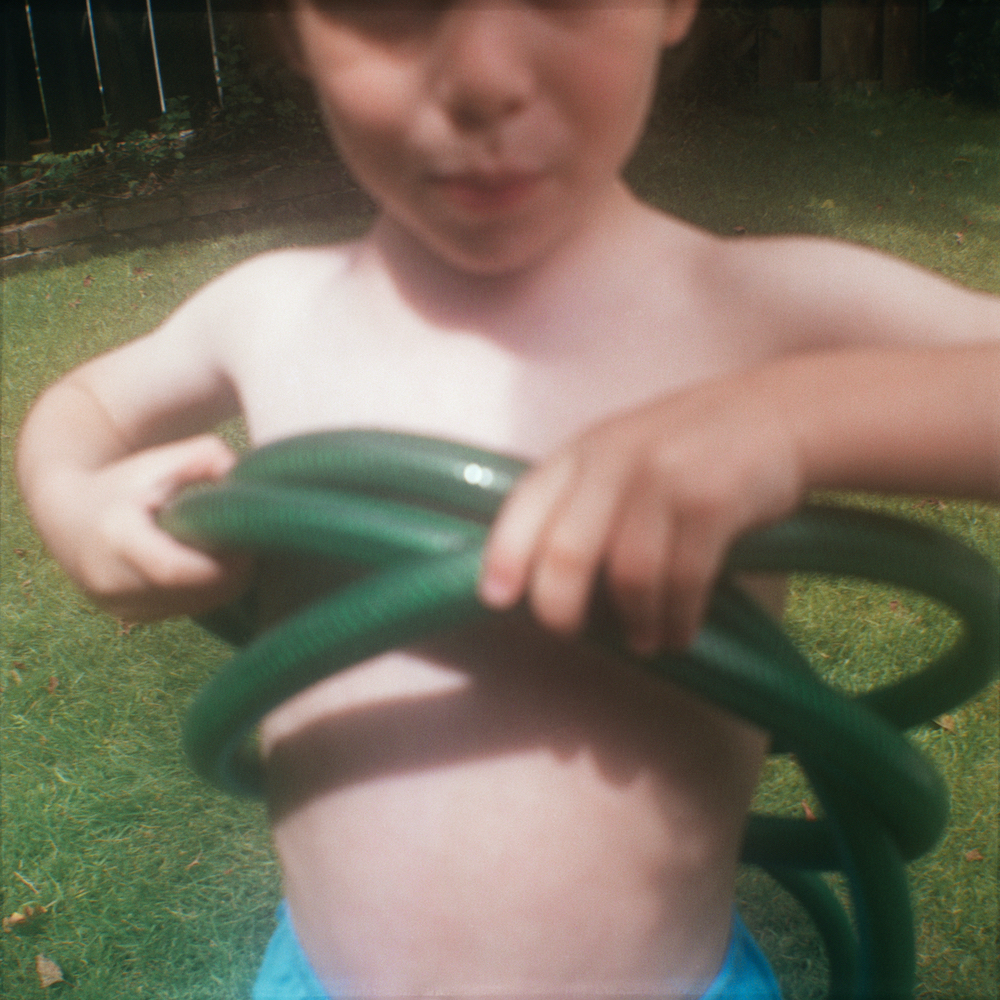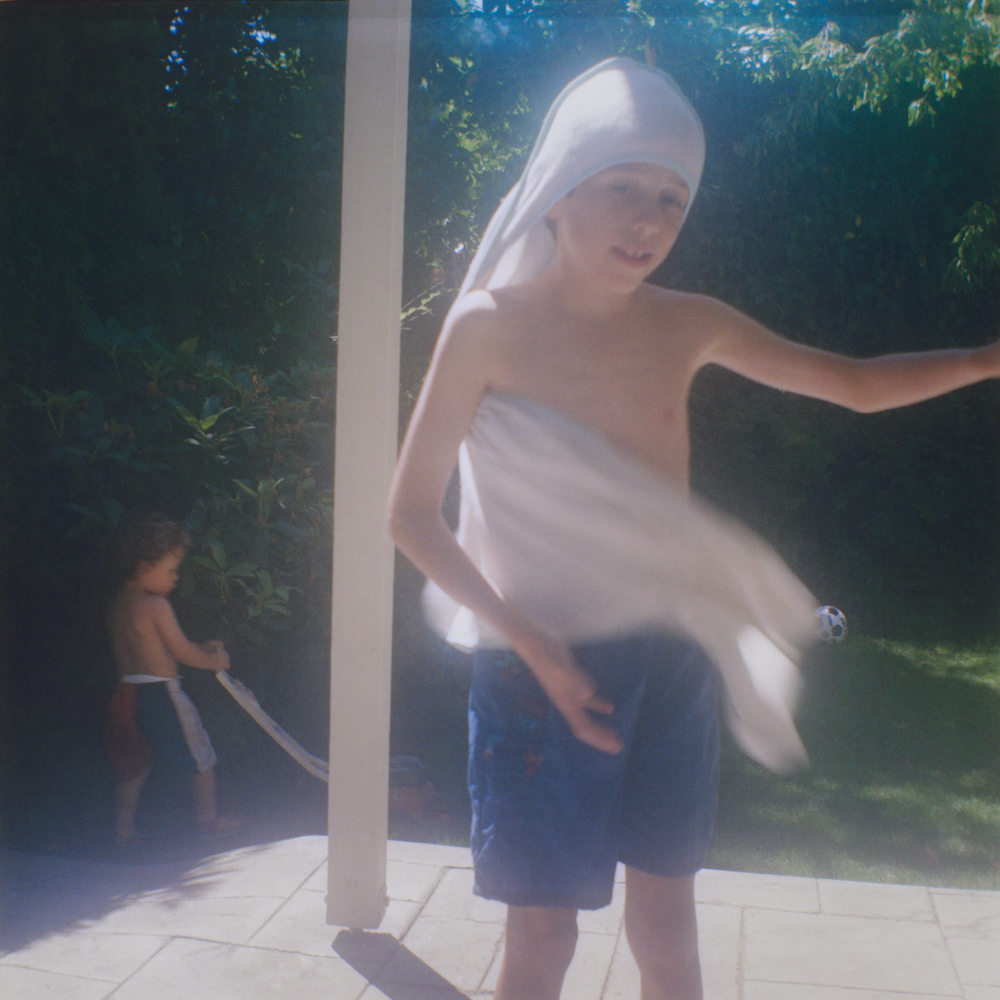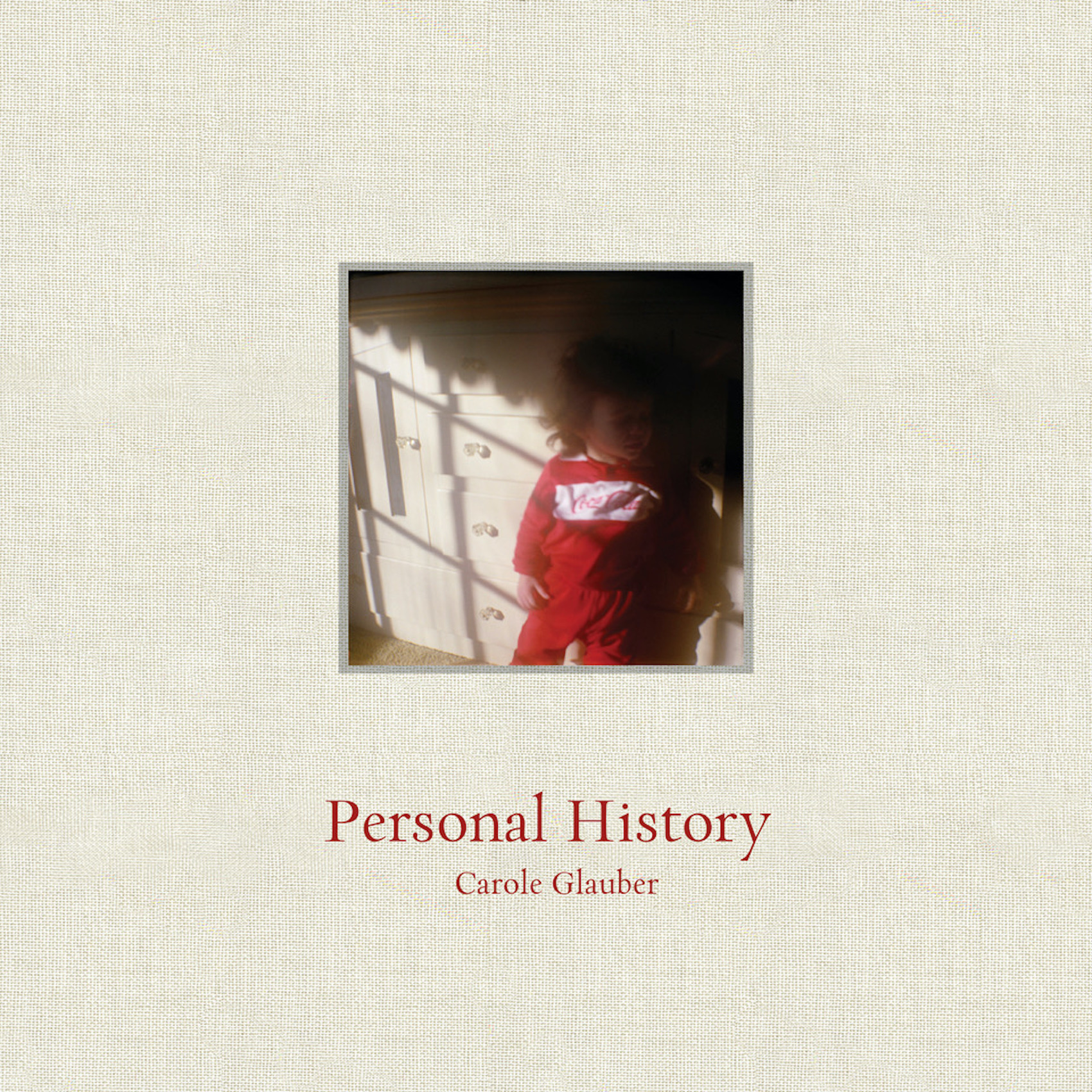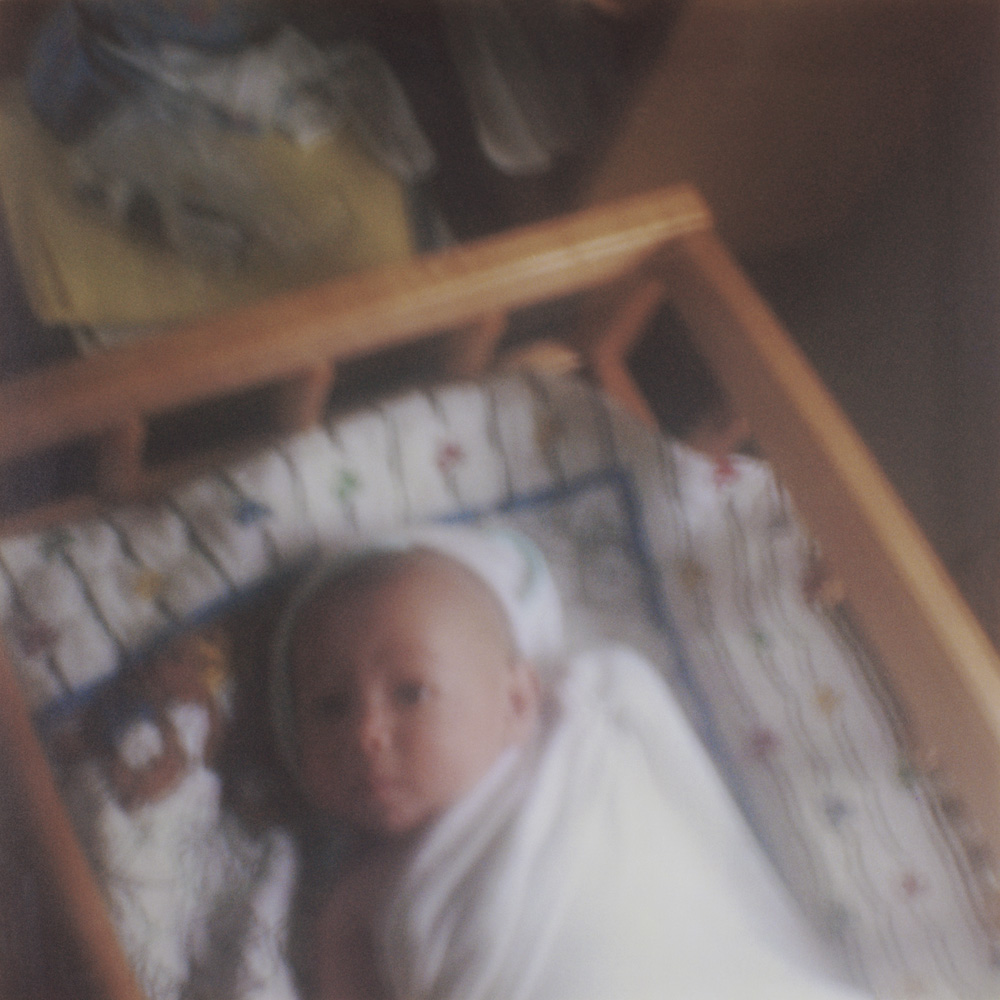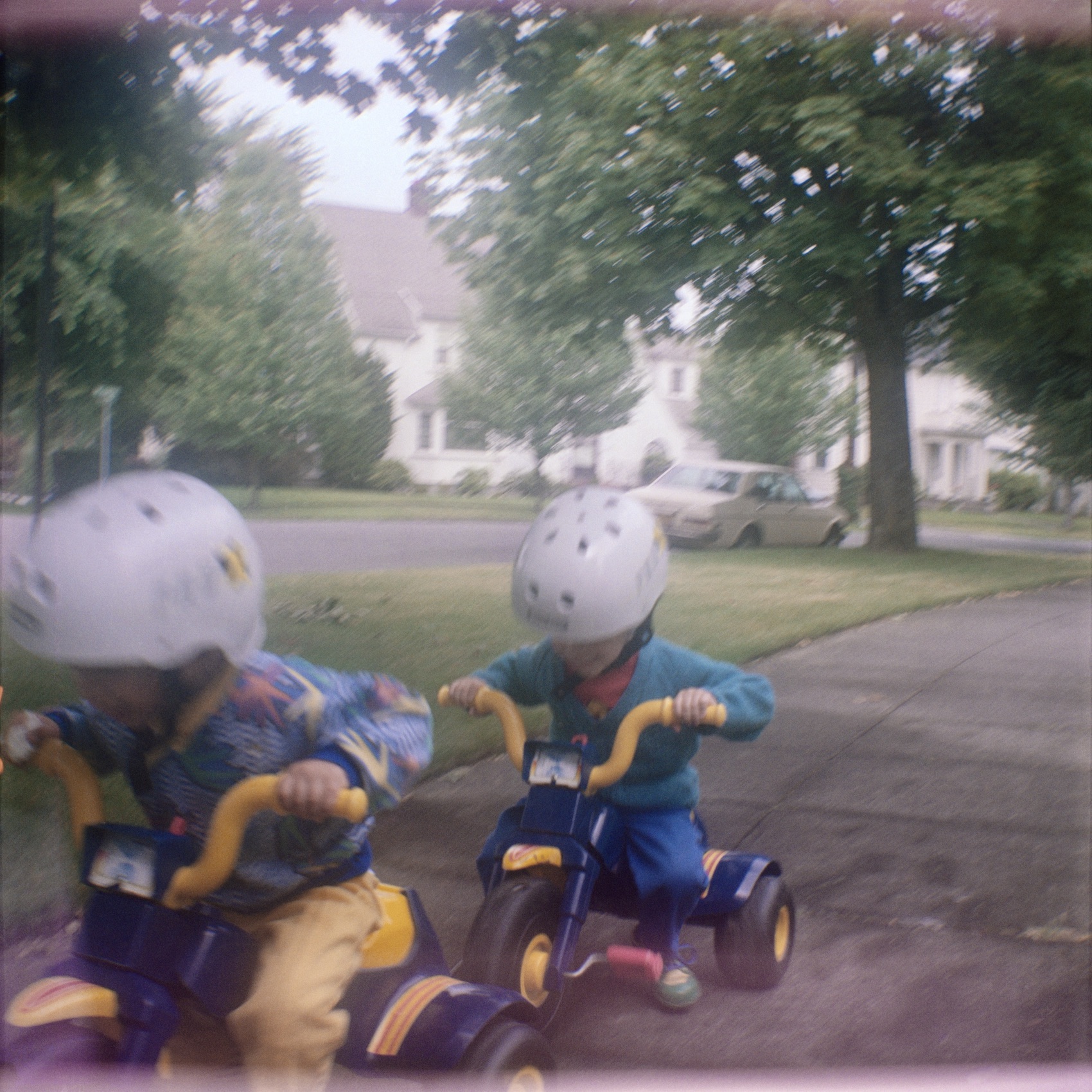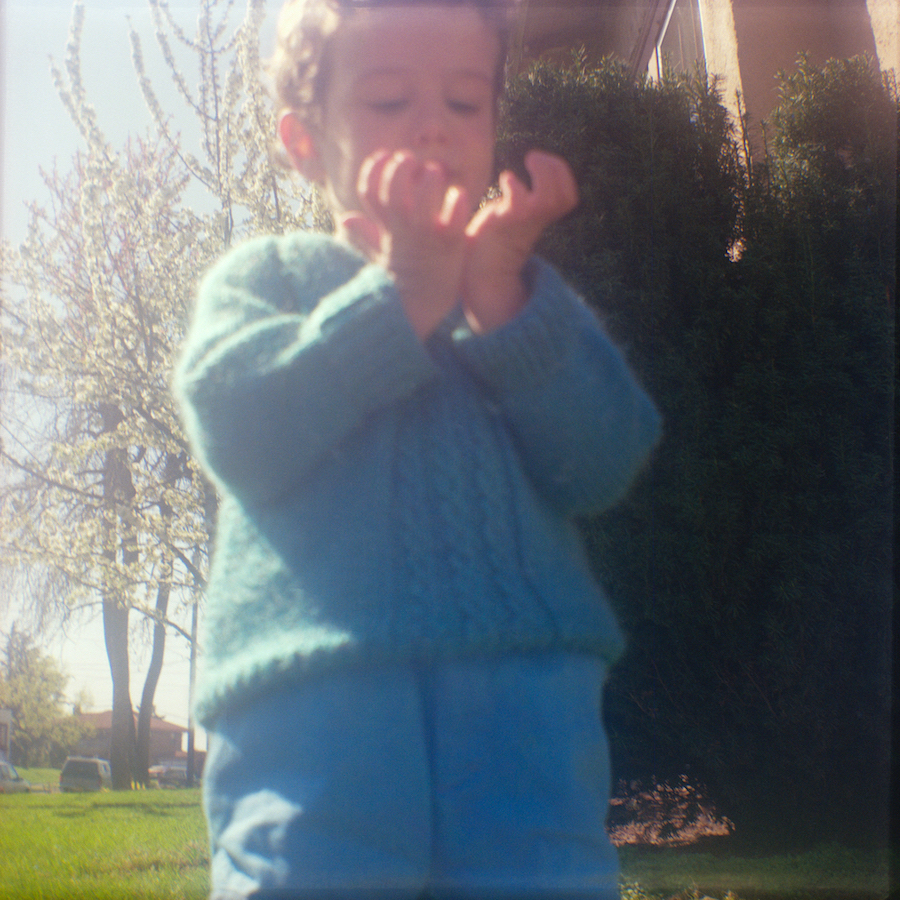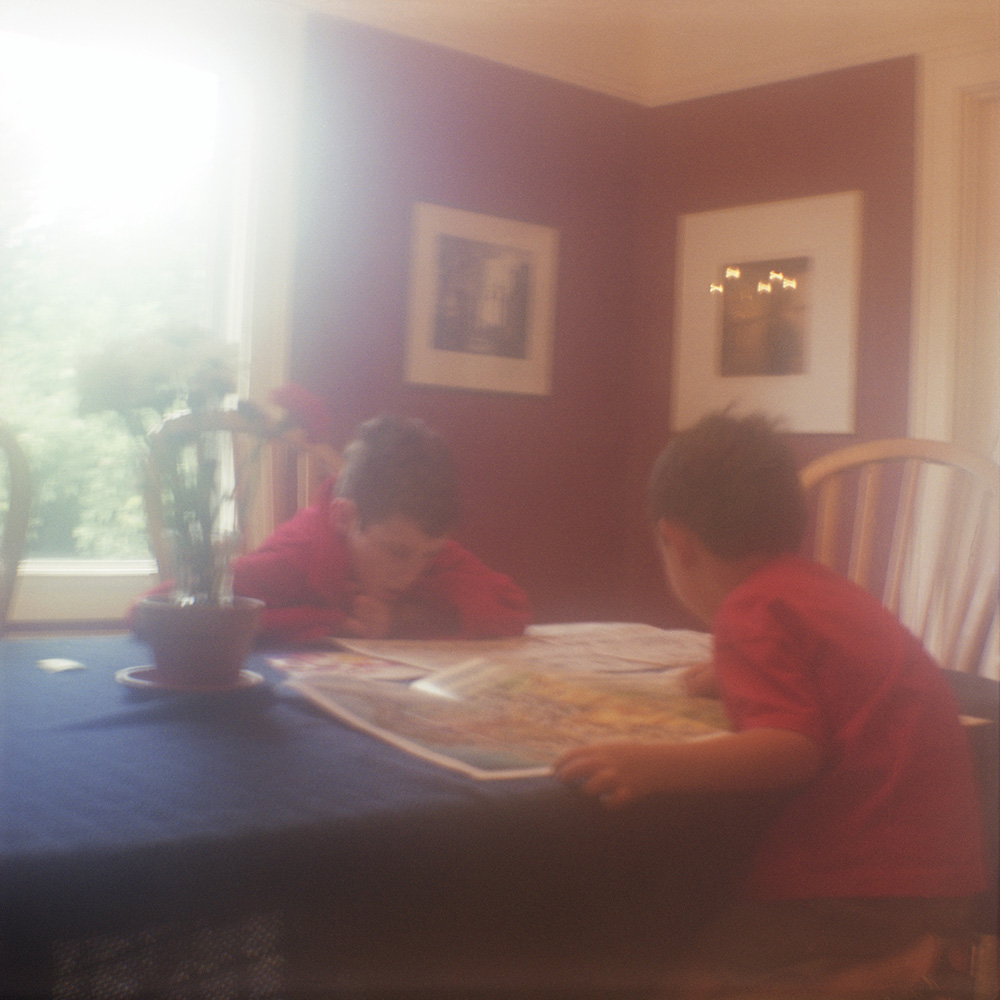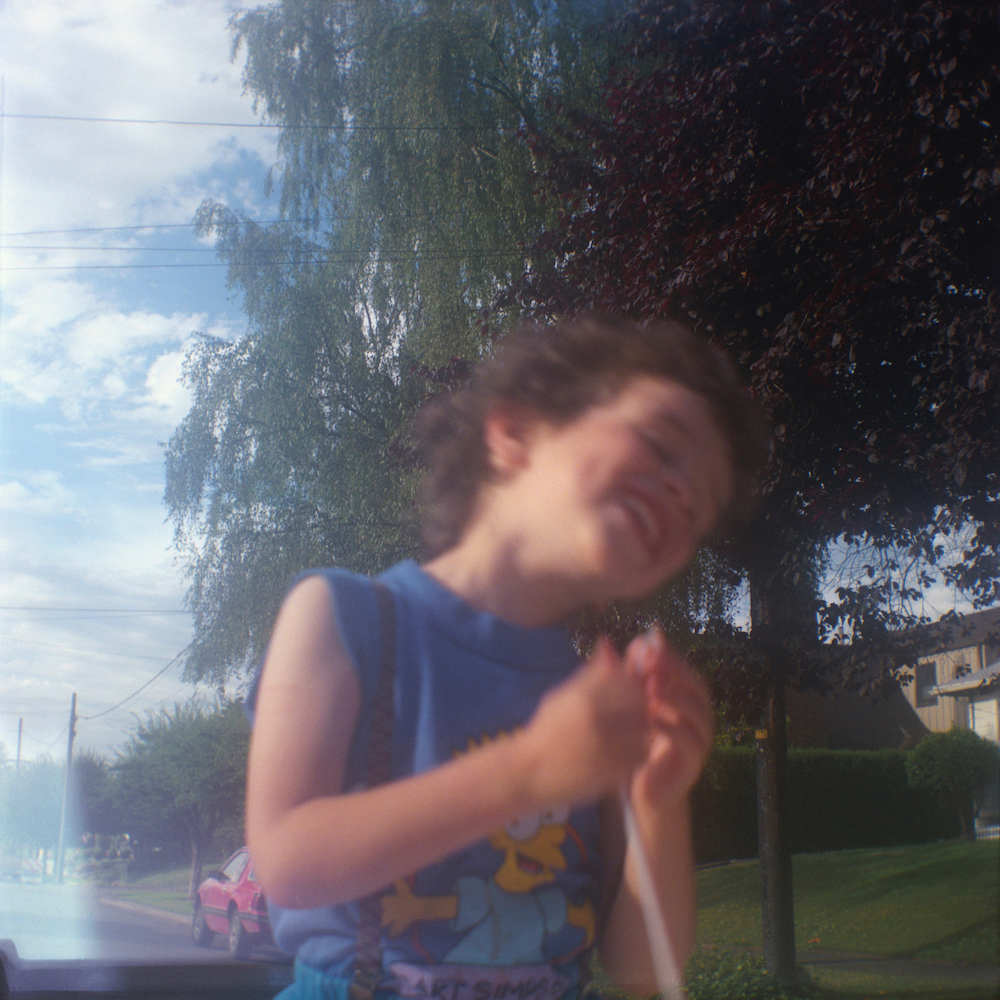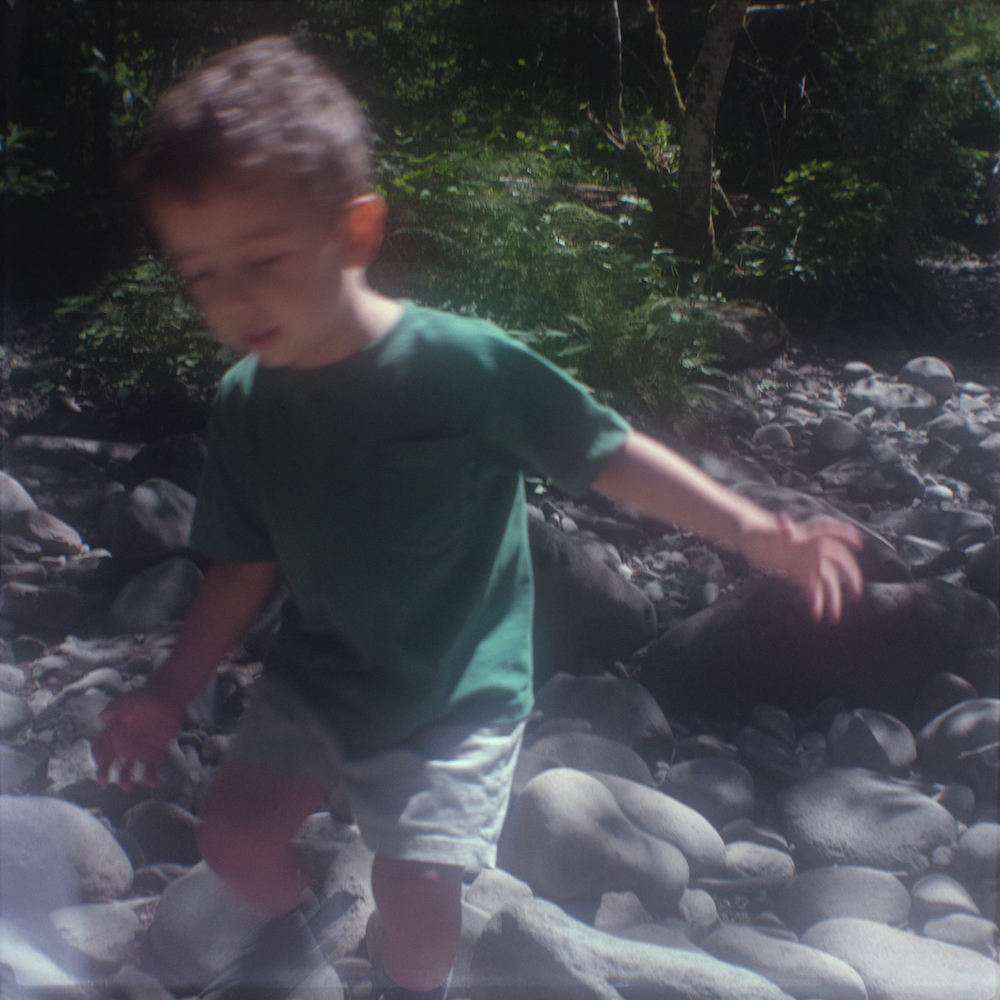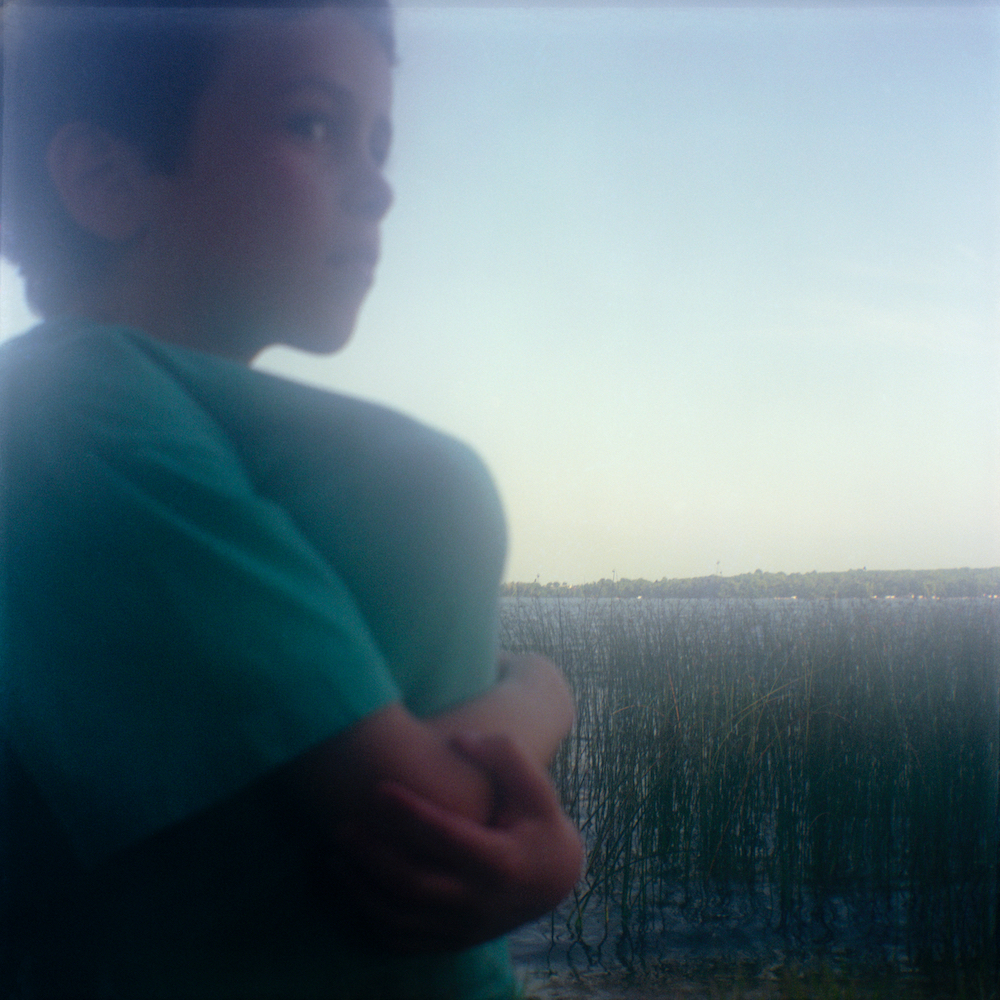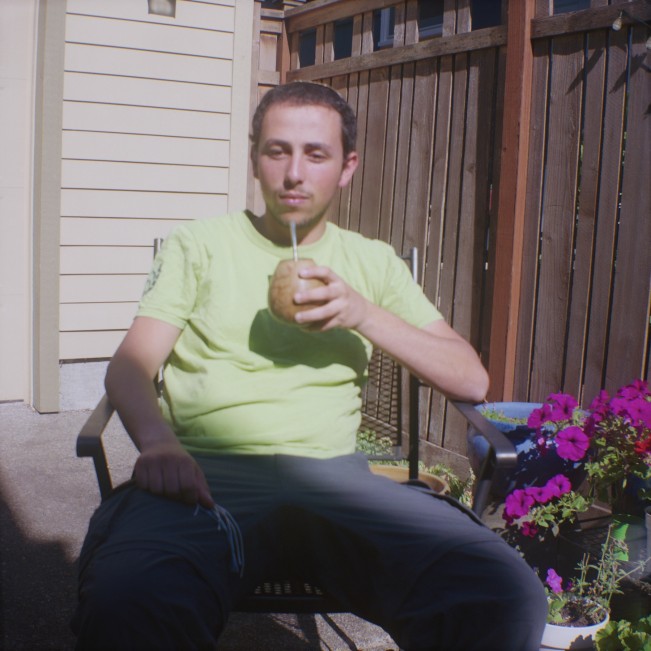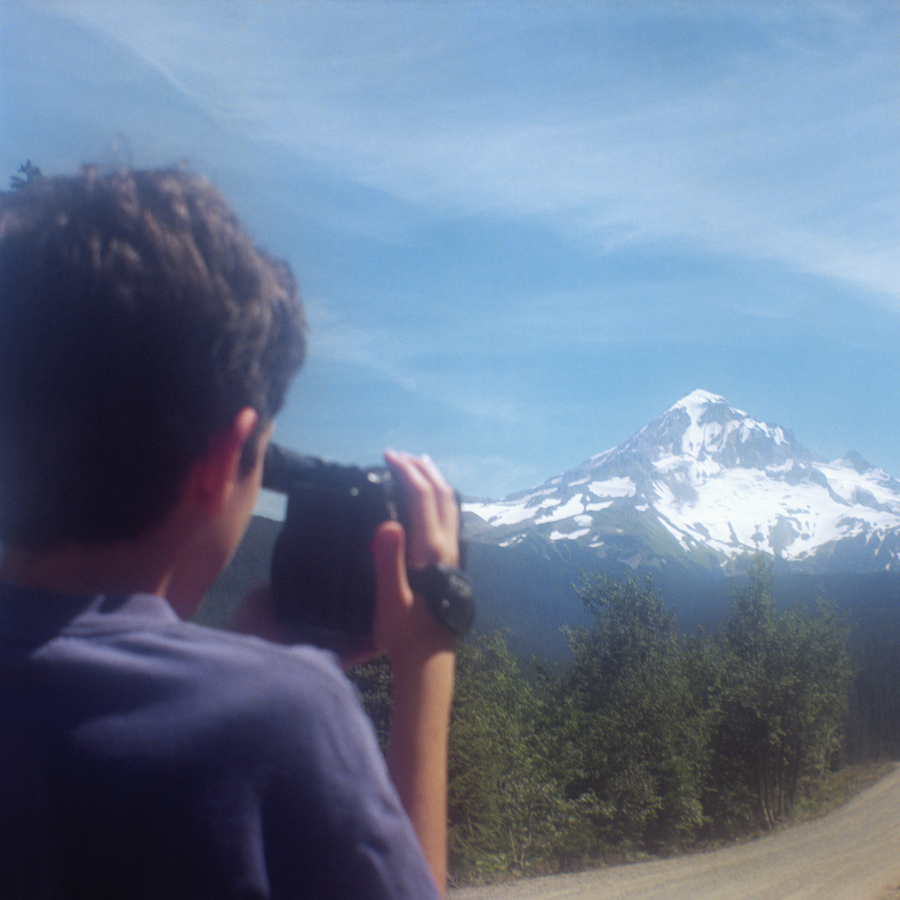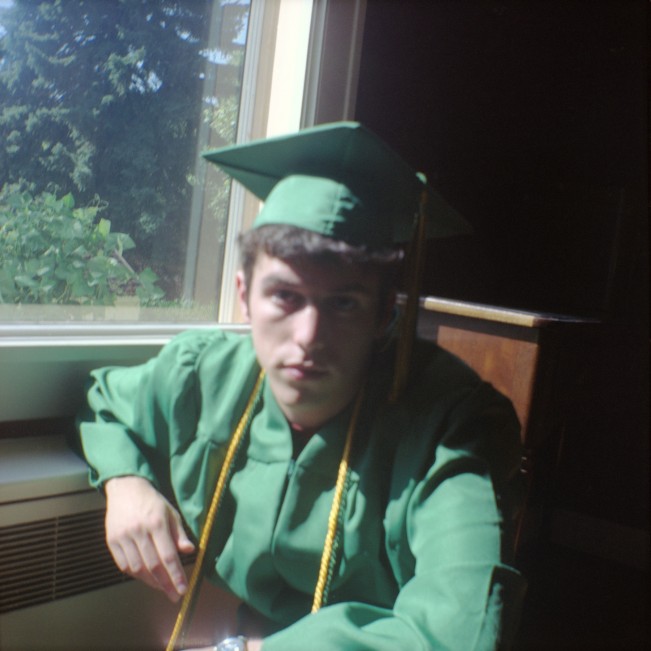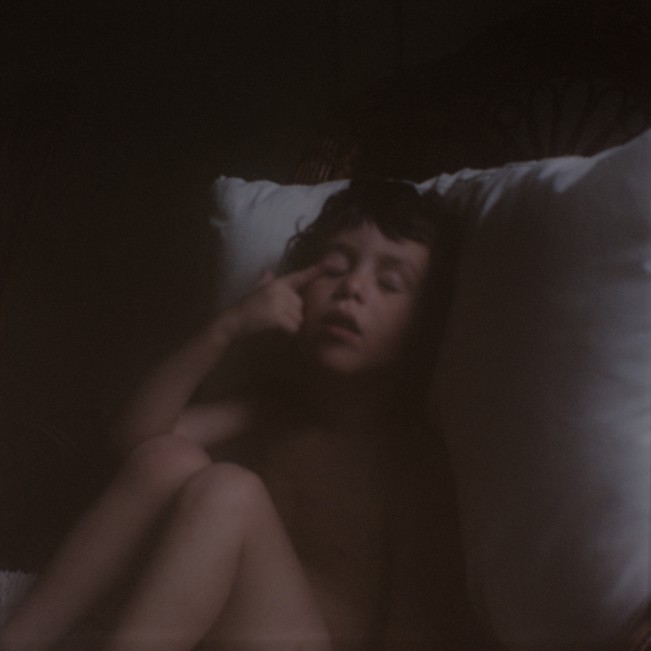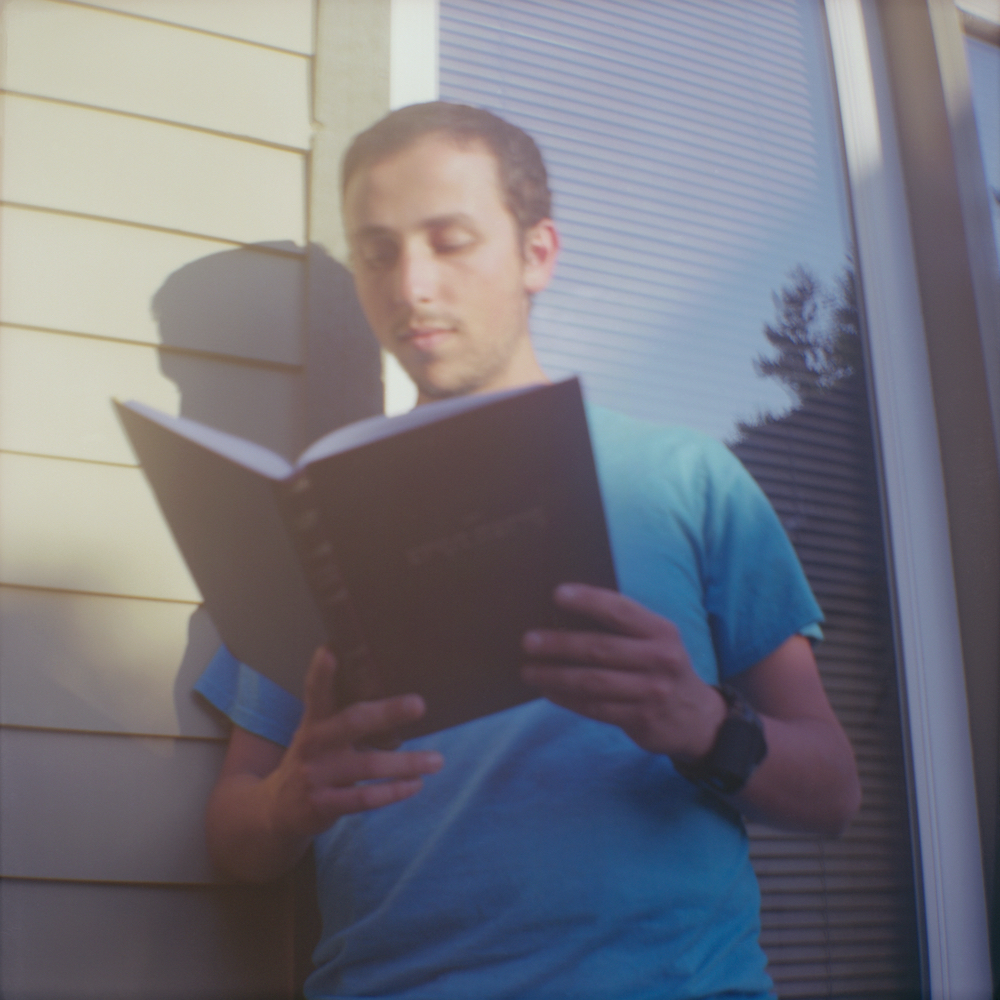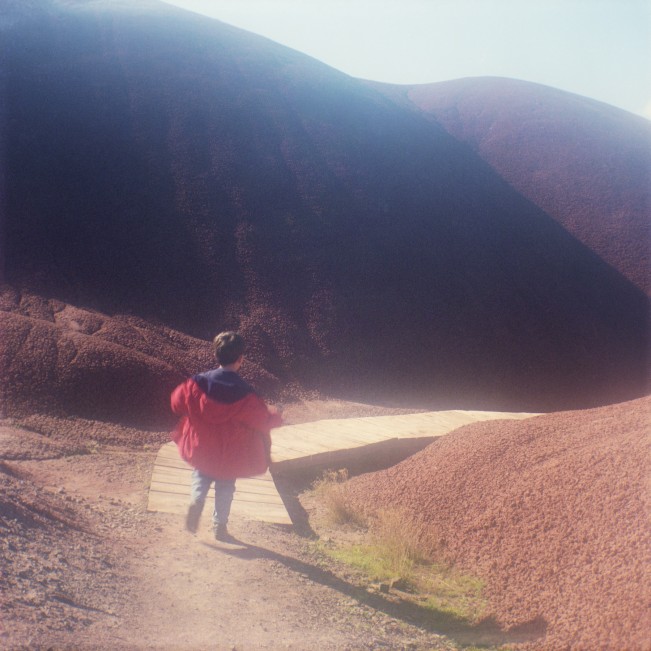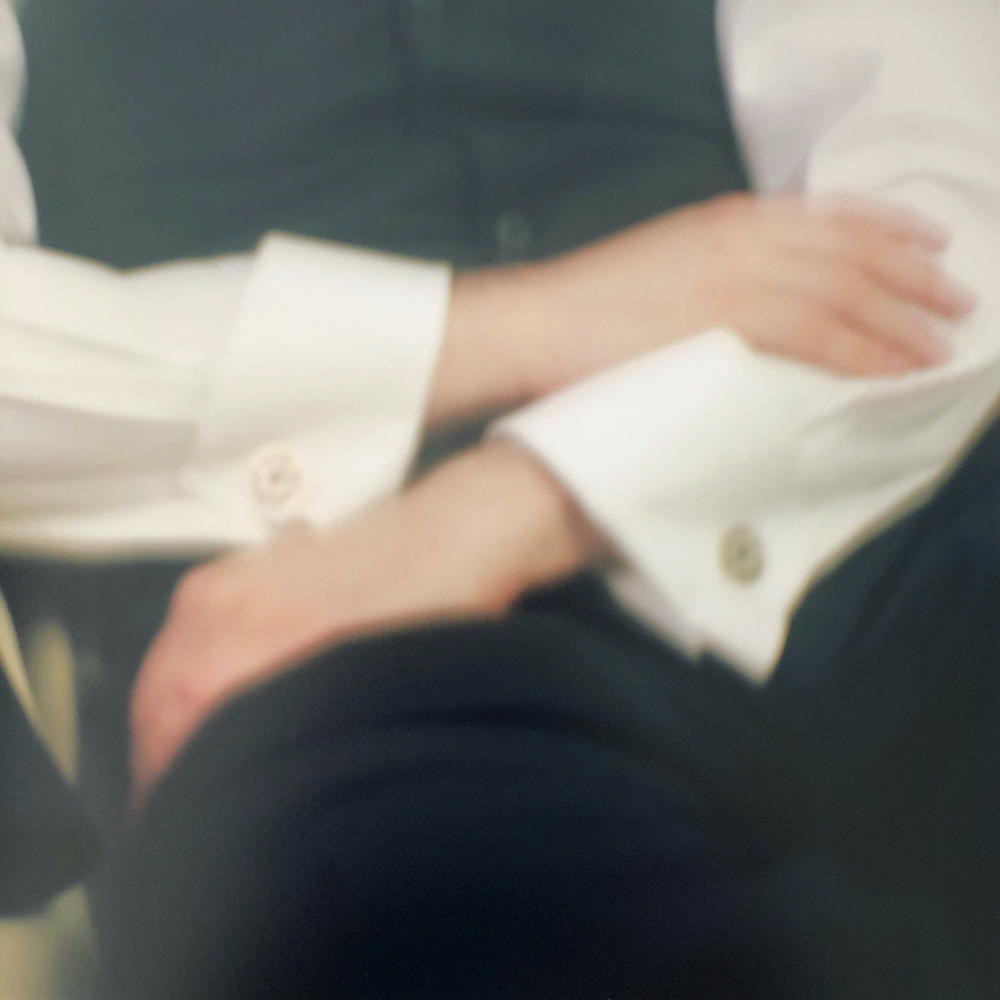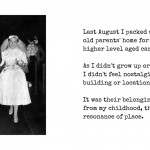Carole Glauber: Personal History
The pandemic has been affecting us for a year now, separating us from family and friends. Those intimate moments we have spent with loved ones have become more precious and even mythical, as we yearn for past times. When I opened Carole Glauber’s new book, Personal History, about the evolution of her sons’ lives over a thirty year period, memories of my own children at various stages came flooding back. I re-experienced the joy, excitement, curiosity, and even trepidation I remember witnessing as they discovered the world. Though this book is highly personal, in that the subject is the photographer’s own two sons, it also has a universal appeal, especially in these times of profound isolation. The soft focus and imperfections created by Glauber’s use of a 1950’s Brownie Hawkeye camera also imparts transcendental qualities to her images. The fuzziness of many of the photographs evokes both the passage of time and makes it less about the way Carole perceived her sons and more about the liminal states that they and all young people experience as they grow from childhood to adulthood. The book is so powerful that it has already been named a Gold Winner in the Book-People category by the jury of the Budapest International Foto Awards and received the Bronze Medal in the Book/People category from the Tokyo International Foto Awards.
Carole Glauber is a photographer whose work has been shaped by her interests in history and biography. She has a BS. Ed in history as well as a Master’s degree in education. Her work has been shown nationally and internationally in over 80 group exhibitions. Besides her recent gold award, she has been recognized by the PX3 Prix de la Photographie in Paris, the Julia Margaret Cameron Awards, the Tokyo International Foto Awards and others. She has also received numerous grants, including the Winterthur Museum Fellowship, the Oregon Humanities Research Fellowship as well as grants from the National Coalition of Independent Scholars, the Regional Arts and Culture Council, and the Northwest Women’s History Project. She previously published a book on photographer Myra Albert Wiggins and has written articles on other early women photographers. Drawn to capturing slices of culture and society, Glauber’s influences include street photographers Garry Winograd and Henri Cartier-Bresson, and early pictorial photographers including Julia Margaret Cameron. Her family’s collections of snapshots from her own childhood also had an impact on the way she approached photographing her sons, as did Kodak album prints.
Personal History is a departure from Glauber’s earlier, more documentary work. Using a camera that is not so easily controlled introduced a technical element of chance in addition to the spontaneous aspects of street photography that she focused on before and which are still present in many images in this body of work. Carole describes working with that camera as cumbersome and often unpredictable; she was frequently unsure of what she was capturing in the frame. During a recent book talk she discussed this with respect to making the image of Sam on the changing table. Only part of Sam’s body is shown, and the angle at which the image was shot make it appear as if Sam and the table are slipping out of the frame. Instead of a photograph of a baby on a changing table as seen by the photographer, the light, accidental composition, and almost floating head of the baby make us wonder what Sam is seeing while he is lying there and what impressions he is forming of the world. In the image of Ben and Daniel on their trikes, the boys have almost exited the scene by the time the shutter was pressed and only part of the boy in the front and his bike are visible Yet, Glauber’s work is not as haphazard as it might first seem. Her years of experience and knowledge of photographic history are evident from the start, and a unified aesthetic emerged as she worked on this project. She always strove to evoke a sense of spontaneity. Yet, the camera’s square frame appealed to her as a constant that brought the images together into a coherent story told over a period of decades.
When Glauber got the contact prints and rolls of images back from the film store over the years, she frequently encountered light leaks, not enough light, too much light, or other issues that made many images unusable. When there was enough information and the images were serviceable, it was precisely these artifacts and inconsistencies that imbued the photographs with a sense of magic. The random effects achieved by using a Brownie camera made it less about Glauber’s intentional perspective and framing, though as photographers we can never escape the fact that some part of us is involved in the creation of the work. Carole states, “The camera allowed me to witness and preserve aspects of their lives on a personal level by connecting to their external lives as interpreted by my internal self.” Ben looking at his hands in the light is a truly magical photograph. Photography is all about light and in this image her young subject appears to be holding it in his hands. In the image of Ben and Sam at the dining room table, the light coming in the window is blinding and obscures what it is the two boys are actually doing or looking at, though upon close examination we can see Ben is reading and Sam is examining a map, which are activities significant for them throughout their lives and define their identifies as they grow into young men.
The fact that none of the images feel staged imparts a greater sense of objective reality to them beyond one photographer’s conception of a particular moment in time. The blurriness of the images also contributes to their universal and timeless feel. The overall affect is that we can perceive and experience more than what is captured in the frame. The images in this truly remarkable book fully capture states of being including mystery, unconscious levels of being, and the process of transformation itself. There is so much in each image, and what can’t be seen is equally present with what is visible. The presence of these deeper states and referents beyond what is actually shown really moved me and made me think about what Roland Barthes wrote in Camera Lucida. Barth said a great photograph caused him to become pierced with emotion and experience punctum, which is not something that can be seen but must be felt.
Though Glauber believes parenting is sacred work, the book is not, she says, about motherhood. In her statement she explains that while much is in our control, much is not. Her goal was to create images that expressed her sons’ point of view instead of merely reflecting her perspective, especially since the transformation we witness our children experiencing belongs to them and not us. Yet, she was the one who made the images and compiled the book, giving her sons a glimpse into their personal history. This is a gift since memories from our earliest years are often elusive. The book calls us to explore the intersection between subject, photographer, and viewer on a meta level. By engaging us so broadly it not only permits but encourages multiple interpretations by different viewers and even varying responses by the same viewer at different times. Ultimately, however, some aspects of the images remain elusive because they are private even within families. This is particularly evident in the photographs of Ben by the lake and Sam drinking from a gourd. In the image of Ben by the lake, we are shown his shadowed, mysterious profile as he looks not in the direction of the landscape in the frame but towards some unknown focal point. Clearly pensive, we have no idea what he is looking at or reacting too, and the possibility remains that it could be some entirely internal state. Likewise, in the image of Sam drinking maté, his focus is on the tip of his nose and some internal thought or memory. How often we are in the dark about what other people, especially our own children, are thinking. Yet it is critically important to give them the space to have their own thoughts.
The book includes an excellent opening essay by photographer Elinor Carucci entitled “Dreamed Reality.” Carucci sees the images as evoking a sense of timing slipping away. They also make us aware that our fading memories are continually altered by the passage of time. As I flipped through this book I did experience a sense of nostalgia, as well as the magic of intimacy conveyed by these images. The secret to both good writing and good photography lies in unique details and gestures; paradoxically this is what makes stories and photographs more universal. As Carucci writes in her introduction, Glauber’s work occupies an interesting place between intentional and vernacular photography. This elevates what might have been family snapshots to the level of fine art, while again having us examine what the images mean on a meta level. The photograph of Ben on the chair touching his eyes while half a sleep can be interpreted in several ways. We can interpret it as being about the role of the unconscious in perception, or we can perceive it as a simple gesture evoking a quasi-sleep state many parents have witnessed their own children experiencing. Though Sam is reading a book, the soft focus and his downcast eyes convey him as being totally absorbed in what he is reading. A whole imaginary world has been brought into the frame, though the viewer is not sure what the book is about since the title is not visible. We do not get to know everything, but that also opens the door for us learning more than we ever thought possible as we are liberated by the shackles of our own perceptual limitations.
The afterword contains an essay by Glauber, who describes how being the subject of a photograph involves a certain degree of vulnerability and her awareness that she was taking gestures recorded in a private space into the public eye. For this reason, she asked her sons to contribute their own essays to the afterword. Hearing how they felt about their mother sharing images of them with the world at large was revealing and helped further contextualize the photographs as being points along the way in the evolution of their perception and identities. As Sam and Ben grew, they increasingly took control of their respective journeys and many of the later photographs seem clearer and more focused, though that was often due to the presence of more light when Glauber made the image. Sam writes the following of the photograph of him with the map: “I must lower the map and peer out at my surroundings. The map may have taken me to this point, but I must not forget to look beyond it as well. It remains in my hand, but I must rise up and make my way on my own.”
Glauber chose two images from Ben’s wedding with which to end this project and volume of images. She felt by this point her two sons were well into adulthood and would become the keepers of their family stories from this point forward, until their children, if they had any, claimed their own personal histories. This book is for people of all ages: young children, parents, grandparents, collectors, photographers and photography enthusiasts, as well as thinkers and writers. As Glauber so accurately states, “It is a book that can take us from a place we know to one that is new.”
Carole Glauber has a BS.Ed in History and a M.Ed. Her interests in history and biography continue to shape her photographic work as well as her research and writing about photographic history. Her photographs have been exhibited in over 80 group exhibitions including PH21 Gallery in Budapest,ValidFoto in Barcelona, Festival Pil’Ours in France, The Center for Fine Art Photography, Blue Sky Gallery, ASmith Gallery, RayKo Photo Center, the Somerville Toy Camera Festival, the Curated Fridge, the Griffin Museum of Photography at Lafayette Center, and PhotoPlace Gallery, amongst others in the United States. She has received awards from PX3 Prix de la Photographie, Paris, the Budapest International Foto Awards, the Mobile Photography Awards, PHmuseum Mobile Photography, the International Photography Awards, the Tokyo International Foto Awards, Pollux Awards, the Julia Margaret Cameron Awards, the Soho Photo Gallery International Krappy Kamera Competition, PH21 Gallery, and Lightbox Photo Gallery. She is the recipient of the Peter E. Palmquist Photographic History Research Fellowship, a Winterthur Museum Fellowship, an Oregon Humanities Research Fellowship and grants from the National Coalition of Independent Scholars, Regional Arts and Culture Council, and Northwest Womens History Project. Her book about Oregon photographer, Myra Albert Wiggins and many published articles reflect her research on early women photographers. Her new book, “Personal History,” just released by Daylight Books is the culmination of photographing her sons for 30 years with a 1950’s Kodak Brownie Hawkeye Camera and color film. IG @carole_glauber
Posts on Lenscratch may not be reproduced without the permission of the Lenscratch staff and the photographer.
Recommended
-
Earth Month Photographers on Photographers: Tyler Green in Conversation with Megan JacobsApril 15th, 2024
-
Shari Yantra Marcacci: All My Heart is in EclipseApril 14th, 2024
-
Artists of Türkiye: Cansu YildiranMarch 29th, 2024
-
Broad Strokes III: Joan Haseltine: The Girl Who Escaped and Other StoriesMarch 9th, 2024
-
Brandon Tauszik: Fifteen VaultsMarch 3rd, 2024

